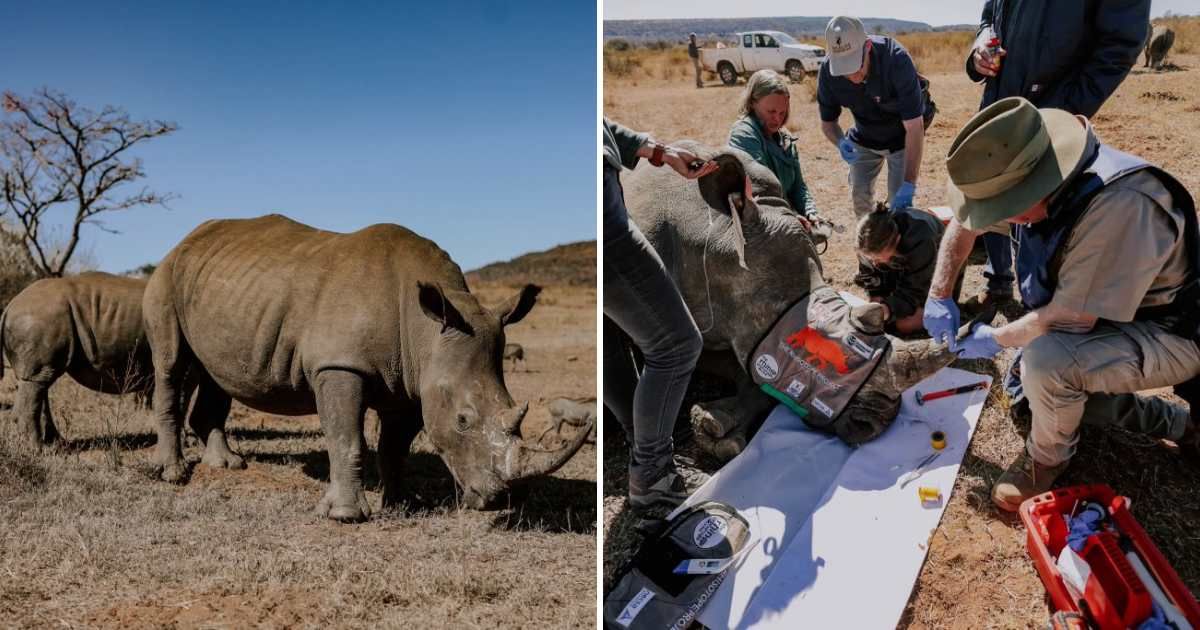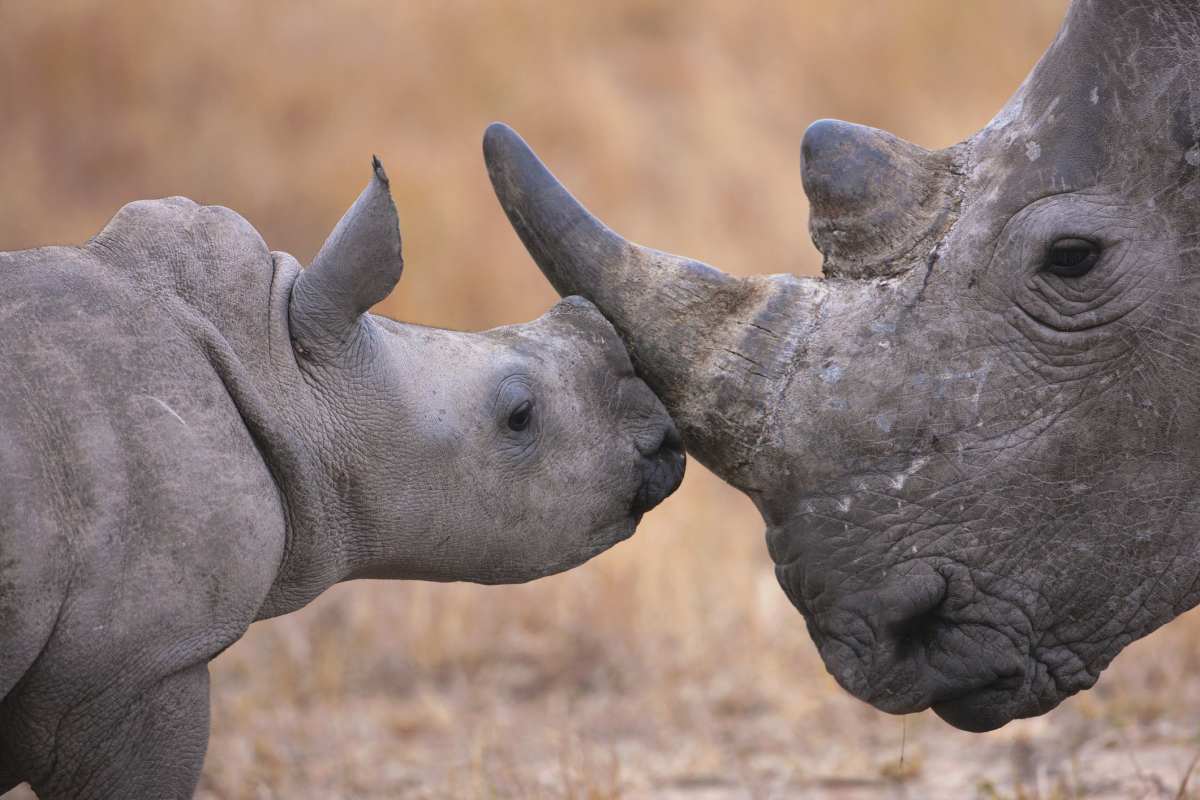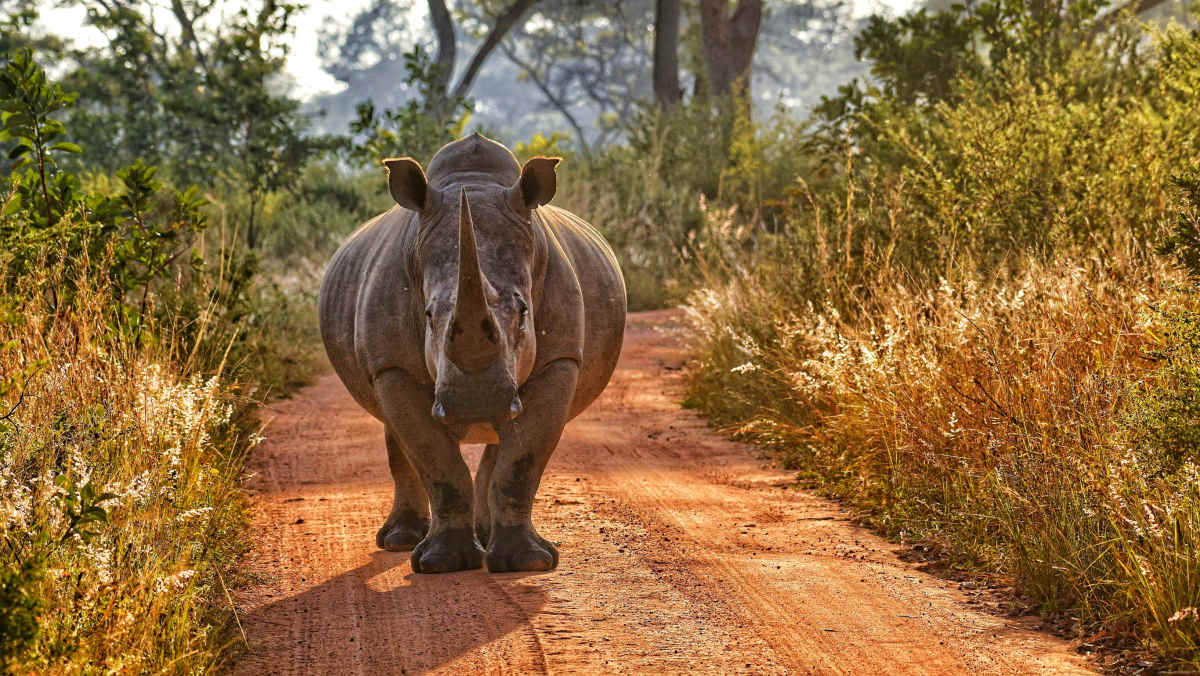Some Rhinos in South Africa Have Radioactive Horns — a Bold Attempt to Save Them From Poachers

On the night of 2nd March, 2012, a gang of heartless men stepped into the barns of Kariega Game Reserve, a 10,000-hectare animal sanctuary tucked in the wilderness of Eastern Cape, South Africa. Their shoulders were loaded with dart guns, tranquilizer pistols, and machetes. Under the cover of darkness, they tiptoed to a thicket where Thandi and Themba were asleep. Then, they fired. Once the drug-induced bullets got lodged in their bodies, Thandi and Themba were jolted into an anesthetizing slumber.

The men used axes and chainsaws to hack off their horns and sell them to fill their pockets. The following morning started with the ghastly cries and screeches of these rhinos, who were bleeding to death. Thandi survived the attack and is now mom to calves Mthetho and Siya, as BBC Earth also posted. However, not every rhino is as lucky as her. Themba, for instance, died a few days after the attack. To disrupt the chain of these illegal poaching episodes, researchers at the University of Witwatersrand initiated the Rhisotope Project, intending to make the rhino horns radioactive.
South Africa – A hub for rhino poachers
South Africa cradles the largest population of rhinos, but on the other hand, it is also one of the most attractive hubs for poachers who don’t hesitate to kill these wild beasts. According to Save The Rhino International, nearly 499 rhinos were killed in 2023 and 420 in 2024. And even though the rhinos in themselves are of no attraction to these poachers, their horns are.
Why rhino horns?

The properties of a rhino’s horn make it a gold-oozing egg, as an expert at Kareiga Game Reserve describes. The horn is a blend of the chemicals keratin, melanin, and calcium. For rhinos, the horns are features that help them attract mate and display their status in the community. Before mating each time, they knock their horns. For poachers and high-profile people, these horns are just symbols of status, precious objects to be looted and smuggled for booty.
The Rhisotope Project
Rhisotope Project Goes Live: After six years of intensive research and testing, the Rhisotope Project has officially reached operational status – where rhinos will effectively be protected through nuclear technology. The Rhisotope Project aims to create a powerful deterrent for… pic.twitter.com/maJxXBuzxB
— Wits University (@WitsUniversity) July 31, 2025
The Rhisotope Project was initiated as a collaboration between nuclear energy officials and conservationist scientists in partnership with the International Atomic Energy Agency (IAEA) and South Africa's University of the Witwatersrand, with James Larkin being the Chief Scientific Officer. "Having seen enough of those videos of animals being mutilated… it came to me that, hey, maybe I could do something about it using my background," he shared with CBC. His goal was to minimize the plight of these animals while ensuring that the process was harmless.
How does the process work?
The rhino is anesthetized and put to sleep, so it doesn’t feel discomfort. Once it has drifted into slumber, the scientists inject its body with two tiny radioactive chips installed into the horn. "You basically drill a hole in the horn, put a carefully selected radioisotope into the horn in a couple of places, then you seal it up, you reverse the tranquillizer, and you send the rhino on its way for the next five years. It’s easy. All done and dusted in a couple of minutes," Paul Hunter, an expert, shared with CBC.
Harmless to rhinos

Larkin added that the drug doesn’t harm the animals, nor does it make them glow in the dark. The radiation, however, is strong enough to set off radiation detectors at airports and border crossings. “We have demonstrated, beyond scientific doubt, that the process is completely safe for the animal and effective in making the horn detectable through international customs nuclear security systems,” he said in a press release. Till now, the project has been tested on 20 rhinos, and scientists hope to start the “mass injection” soon.
More on Green Matters
These GPS “Eggs” Are Catching Sea Turtle Poachers in the Act
Scientists Release Millions of Live Mosquitoes in Hawaii to Save a Bird Species From Extinction